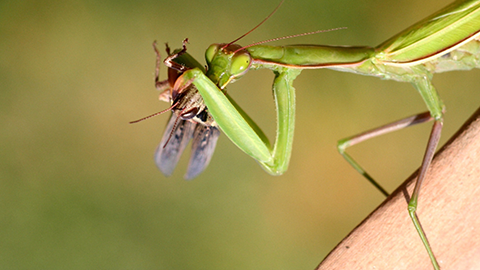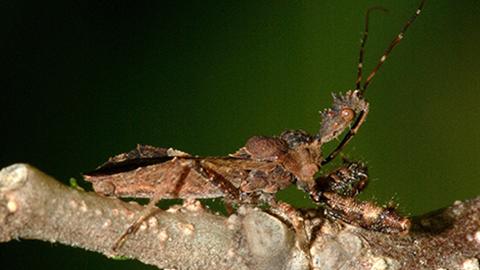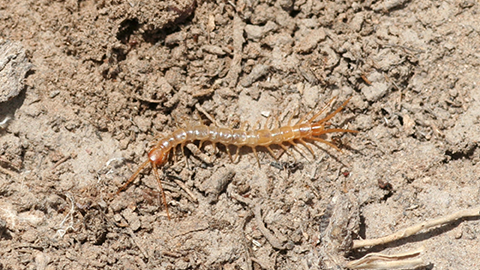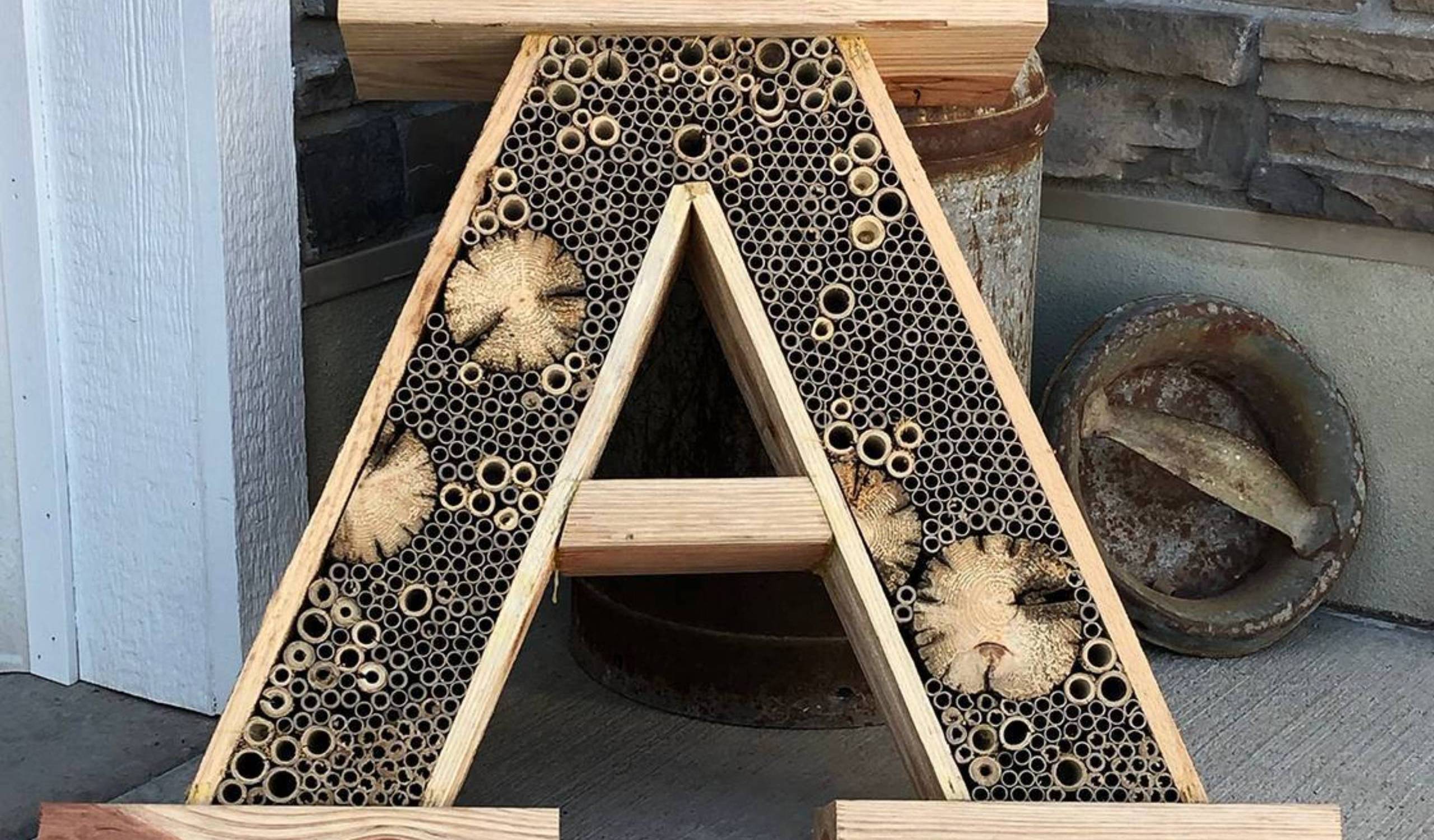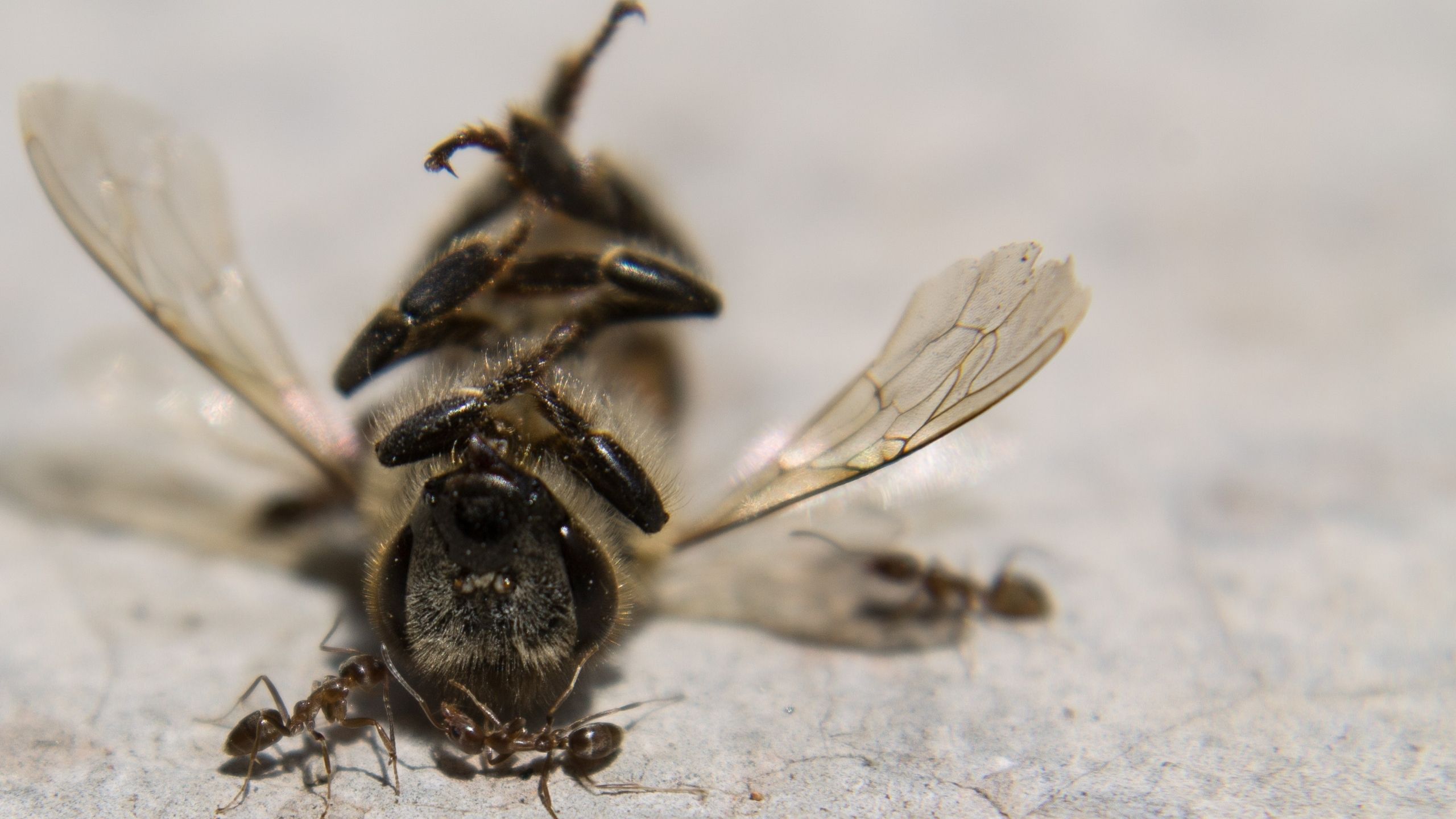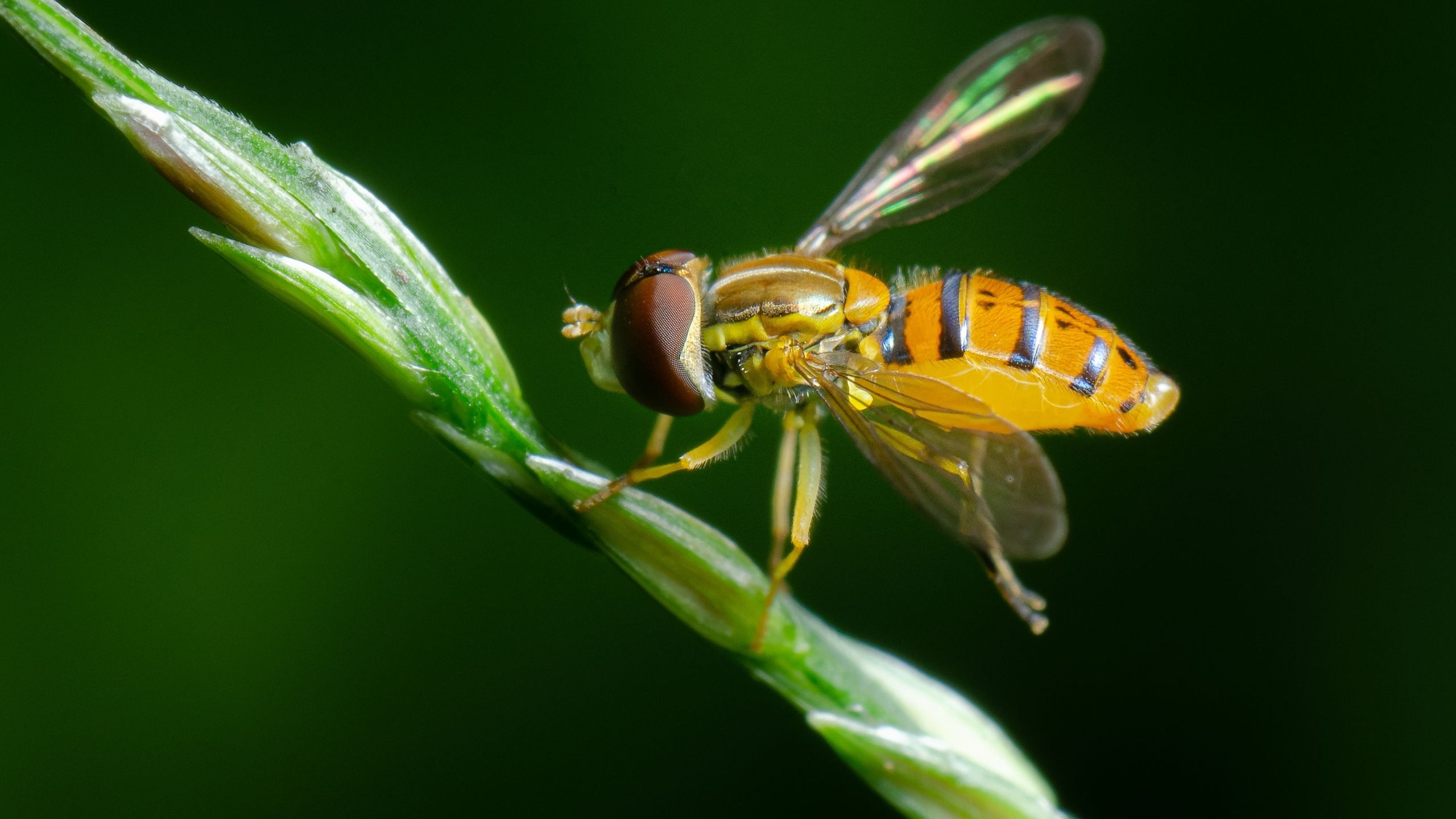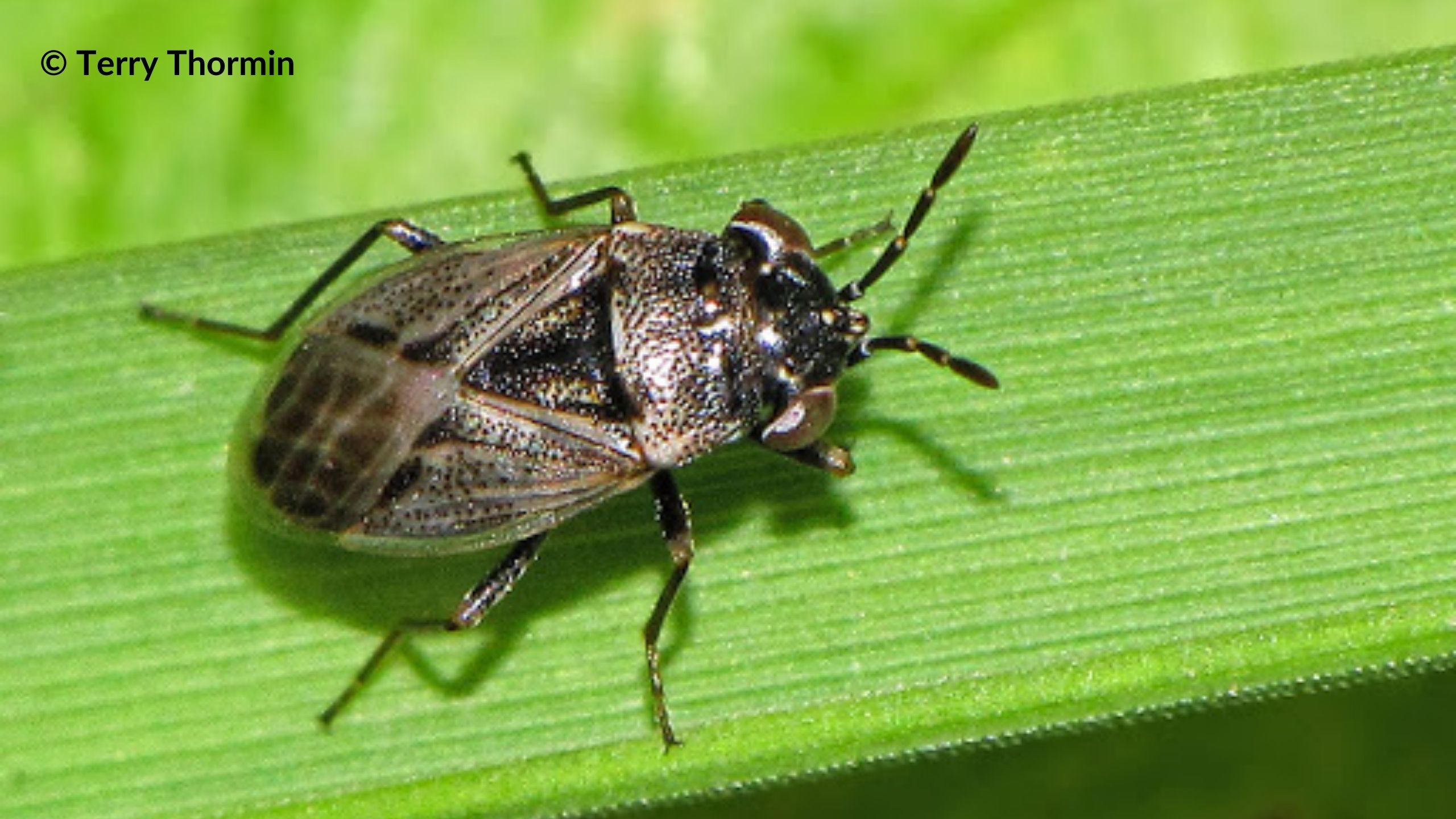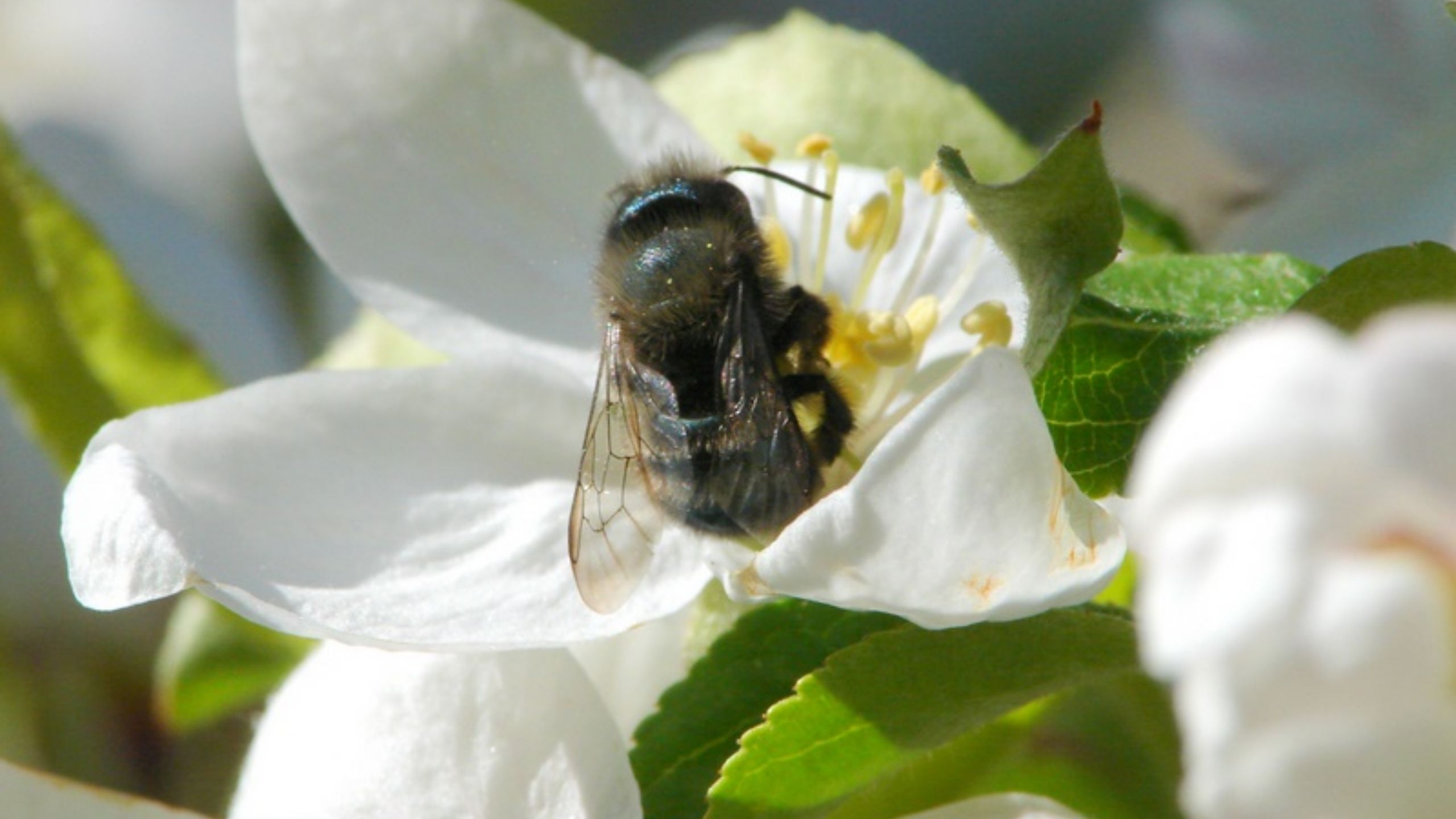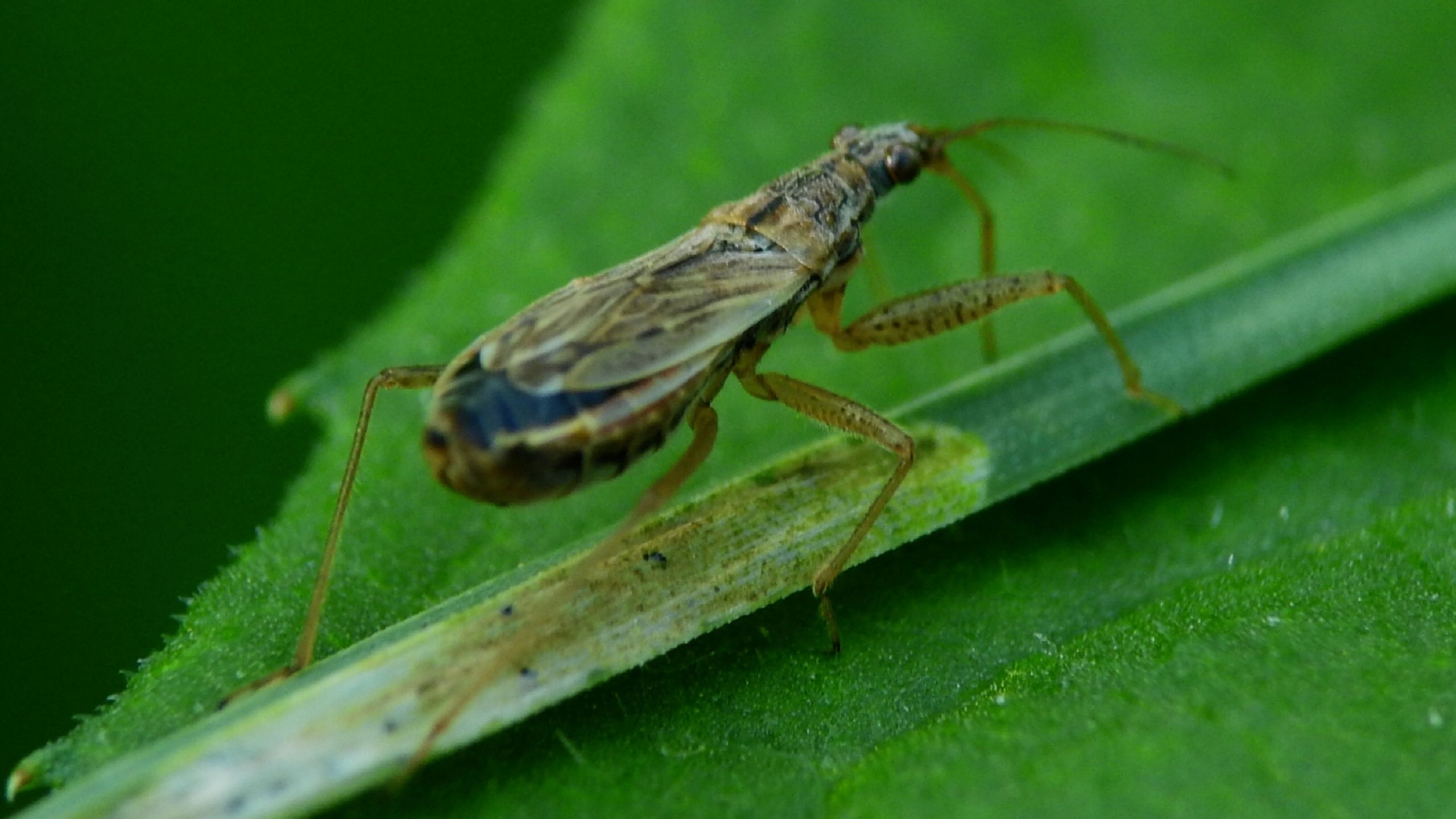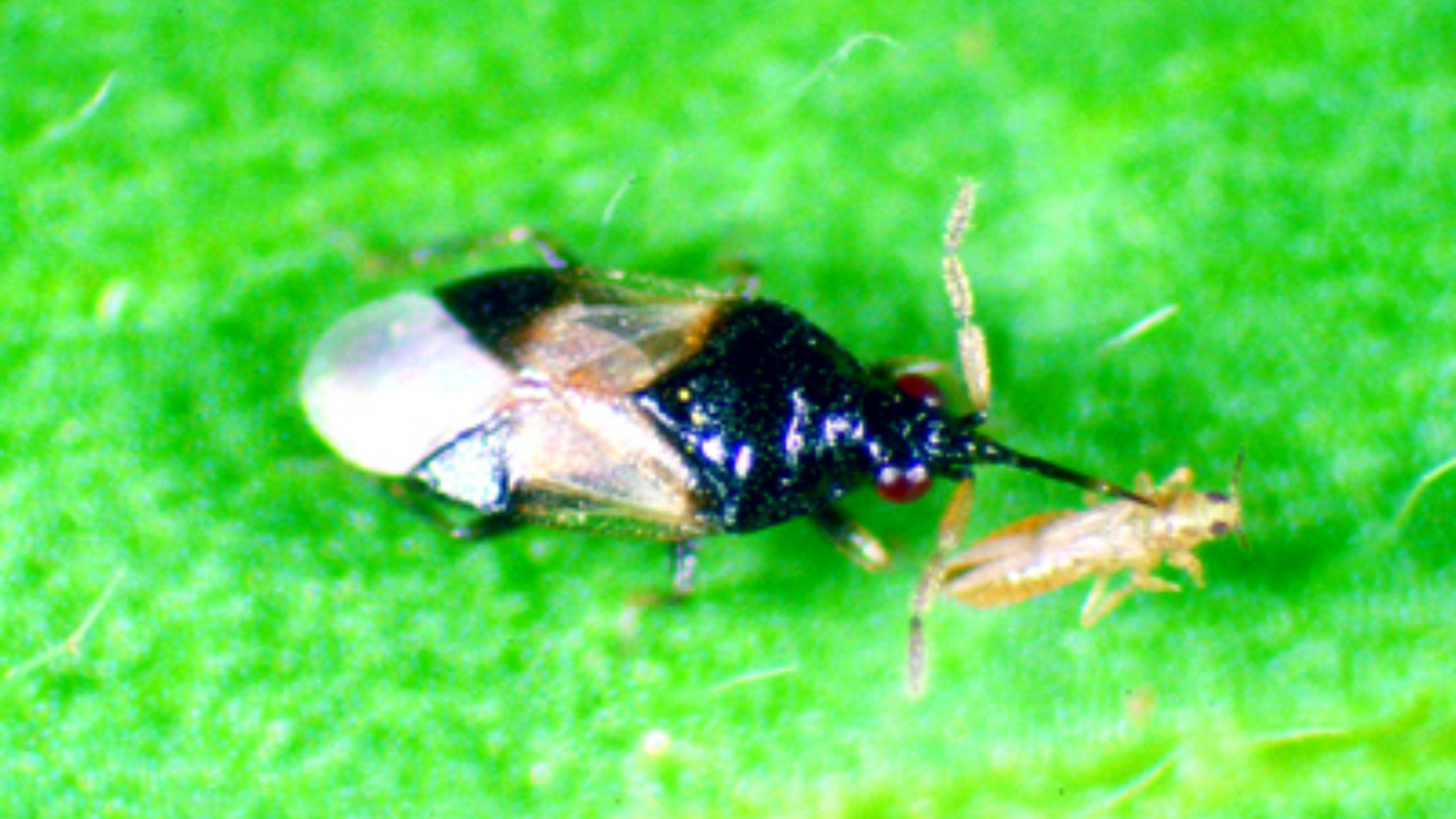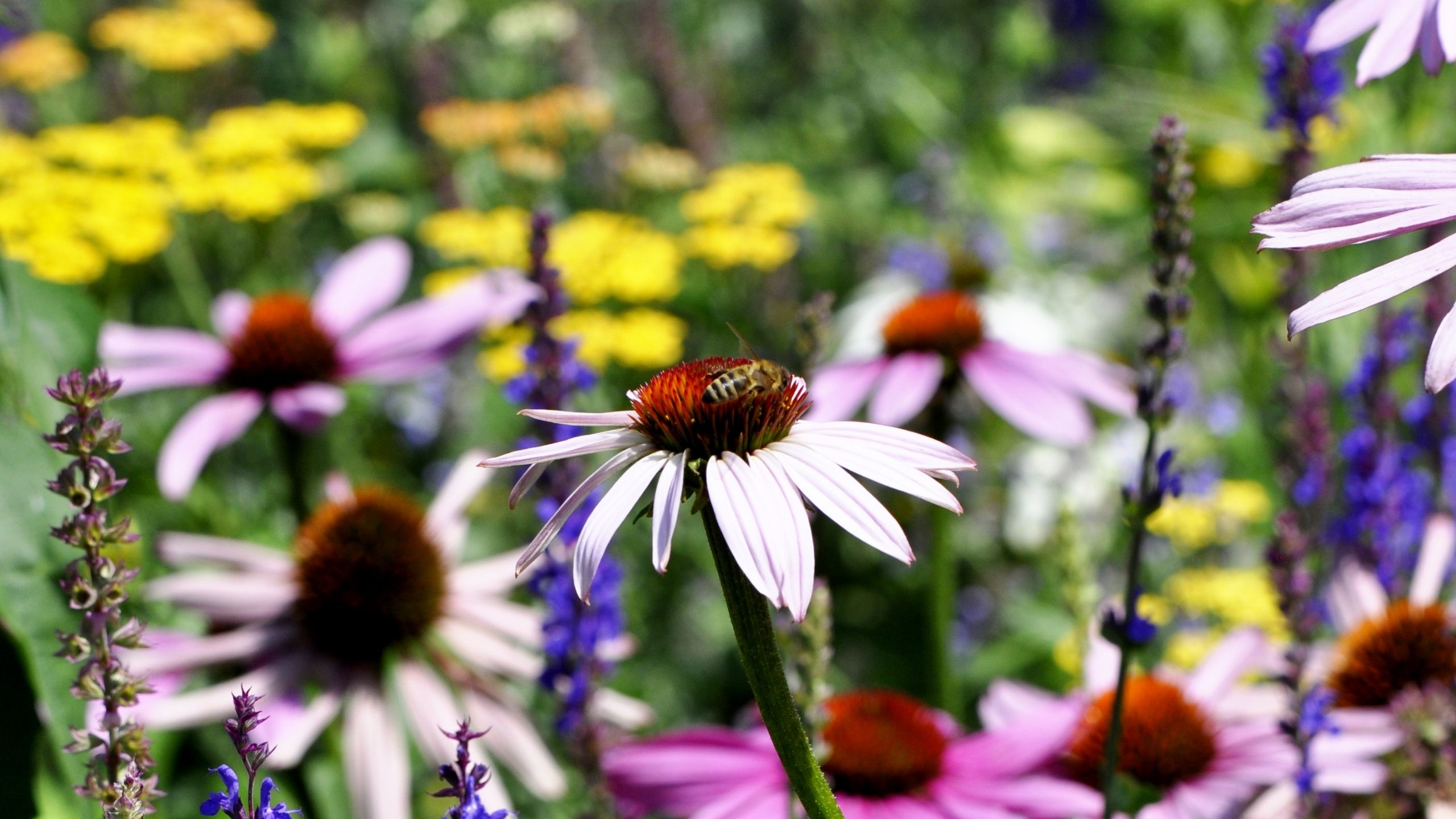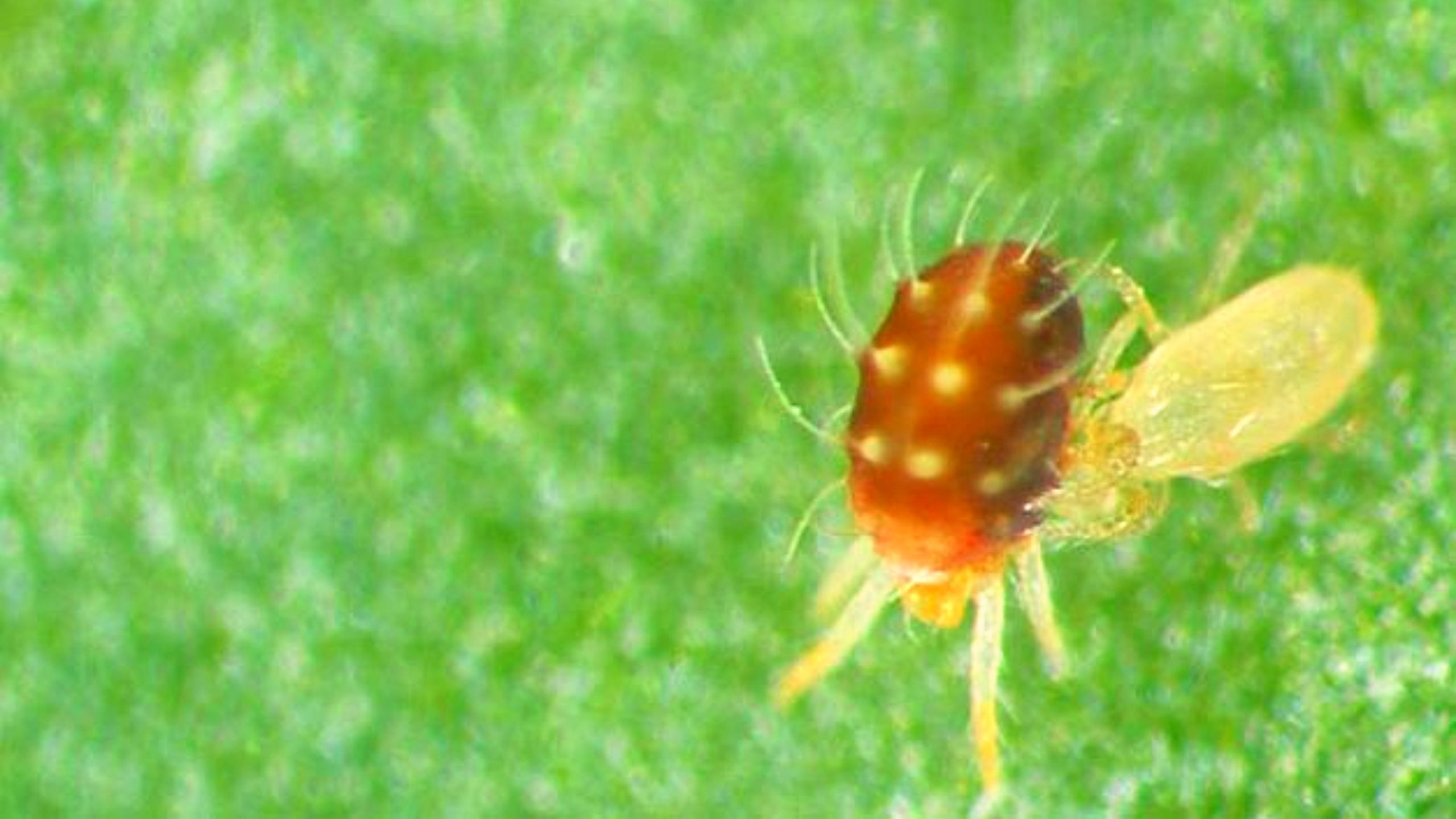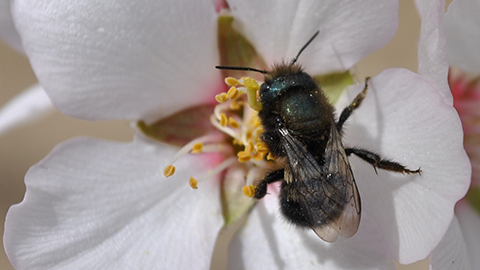Beneficial Insects:
Lacewings And Antlions
July 2008
Erin W. Hodgson, Extension Entomology Specialist (No longer at USU) • Jessie Trina
What You Should Know





- Lacewings and antlions are considered beneficial because the larvae eat a wide variety of soft-bodied insects.
- Adult lacewings feed on nectar, pollen and aphid honeydew. Brown lacewing and antlion adults are also predatory on other insects.
Lacewings and antlions are insects in the order Neuroptera. There are over 4,000 different species of lacewings and antlions throughout the world. In general, the adults have soft bodies, long antennae, and prominent eyes. Also, lacewings and antlions have two pair of oval, mesh-like wings made up of many crossveins that are held roof-like over the back at rest (Figs. 1-2). Sometimes the adults are mistakenly identified as moths, damselflies or caddisflies. The larvae are voracious predators of other insects, but are sometimes mistakenly identified as harmful or destructive.
How to Promote Lacewings and Antlions
There are a few guidelines for making your garden look especially attractive to lacewings, antlions and other beneficial insects. In general, adults seek out pollen and nectar to fuel migration and reproduction.
- Start with using as many different native plants as you can. Try to incorporate native flowering plants in addition to the fancy varieties.
- Plan for nectar and pollen availability all summer long. Seek out plants that have long-lived blooms so that adult natural enemies always have access to food. Consider using flowers that bloom at different times of the year for continuous pollen production.
- Natural enemies might initially be attracted to an area because of the available pollen and nectar, but will not necessarily stay. In general, predatory insects like to reproduce and generate offspring near a generous food supply of other insects. For example, lacewings like to lay their eggs on plants that are infested with aphids because it ensures the offspring will have food to eat when they hatch into larvae.
- Avoid using broad spectrum insecticides whenever possible, because they can kill beneficial insects too.
Lacewing Life Cycle
Lacewings go through complete metamorphosis (egg, larva, pupa, adult) and have at least two generations per year. The life cycle takes about 4 weeks depending on temperature. A female lacewing can deposit over 200 eggs. In 4 to 5 days, the eggs will hatch into small alligator-like larvae.
Lacewing larvae are brownish and can have dark reddish-brown stripes and spots (Fig. 3). They have large jaws for grasping prey and injecting a paralyzing venom. Lacewing larvae, sometimes called aphid lions, typically feed on soft-bodied insects such as aphids, mealy bugs, thrips, mites, leaf hoppers, whiteflies, caterpillars, other immature insects, and sometimes each other. The larvae develop three instars in 2 to 3 weeks, and are 9.5 mm long when full grown. Larvae will spin a silken pale cocoon that is loosely attached to foliage. During the pupal stage they develop wings and reproductive organs.
After 5 to 7 days the adult will emerge from the cocoon and begin to mate. Adult lacewings have chewing mouthparts, are about 18-19 mm long, and feed mostly on nectar and pollen. They can survive for about 5 to 6 weeks and are considered weak flyers. Lacewings are often found in crops highly infested with aphids, such as sweet corn, potatoes, cole crops, tomatoes, peppers, eggplants, asparagus, leafy greens, apples, strawberries, and alfalfa. Adults are also highly attracted to lights at night.
Common Lacewings
Green lacewings (family Chrysopidae) are the most common type found in Utah. In general, green lacewing adults have delicate, pale green bodies, golden eyes, and transparent wings (Fig. 1). The most common species of green lacewing throughout the United States is Chrysoperla carnea. Adults are 12-20 mm long, have long antennae, and are active flyers during the evening. Female green lacewings lay distinct eggs on the undersides of leaves, and are individually attached to a ½˝ hair-like filament or stalk (Fig. 4). The stalks help protect the eggs from predation.
Brown lacewings (family Hemerobiidae) are not as commonly seen as green lacewings because they prefer wooded areas. Brown lacewings are typically smaller than green lacewings, and have light brown bodies and transparent wings (Fig. 5). The most common species of brown lacewing, Hemerobius stigma, is 5-7.5 mm in length. They are predatory both as larvae and adults and help contribute to early-season pest control.
Antlion Life Cycle

Antlions go through complete metamorphosis (egg, larva, pupa, adult), but have an extended life cycle where one generation may take 2 to 3 years. After mating, female antlions will stick their abdomen into the sand to deposit eggs. Antlion larvae are sometimes called “doodlebugs” or “sand dragons” due to the winding, spiral-like trails they leave in the sand while looking for a location to build a trap. Doodlebugs have three pairs of walking legs and a flattened head with sickle-like jaws that can inject venom into prey (Fig. 7). Depending on the species and location, the larvae will either hide under leaves or pieces of wood, or dig pits in sandy areas (Fig. 8). They prey on small insects, mainly ants, as their name suggests. Doodlebugs can eat for two years and will molt three times before becoming full grown. The larvae eventually make a cocoon of sand and silk to pupate. These cocoons are sometimes buried several centimeters deep in the sand. After about 4 weeks, adult antlions will emerge from the pupal case and arrive at the sandy surface (Fig. 10). Adults live for another 4 weeks. As with brown lacewings, antlion adults feed on nectar, pollen and are predatory on other insects.
Common Antlions
Antlions (family Myrmeleontidae) resemble damselflies, but have longer, clubbed antennae (Figs. 2, 6, 9). Adults can be up to 45 mm long and have a 65 mm wing span. In general, they are brown in color, have oval, mesh-like wings, slender bodies and large eyes. The most abundant antlion genus is Myrmeleon, and the most common species in the United States is Myrmeleon formicarius. Antlions prefer arid and sandy habitats, and can be found in cool, dry areas. Adults are considered poor flyers, but are active at night and attracted to lights.







